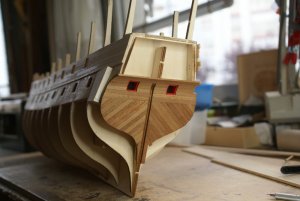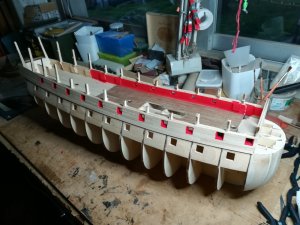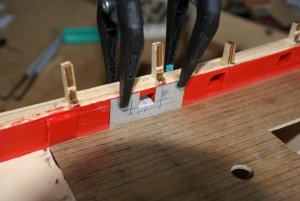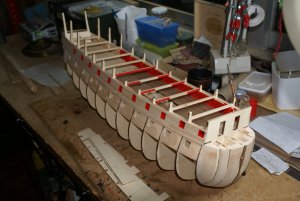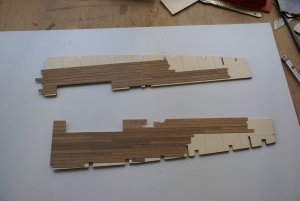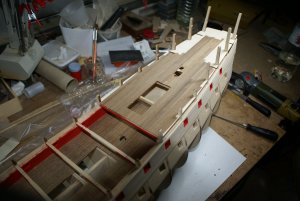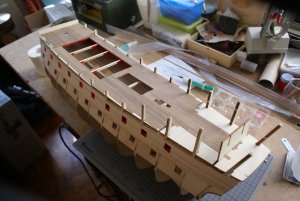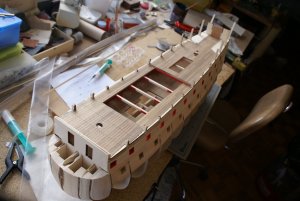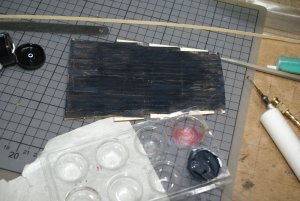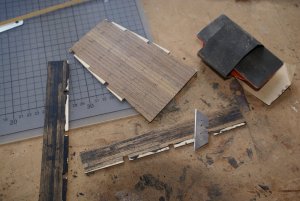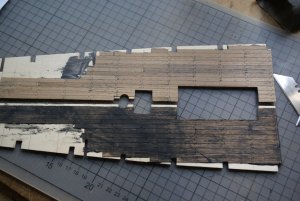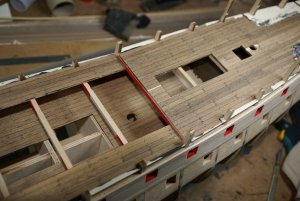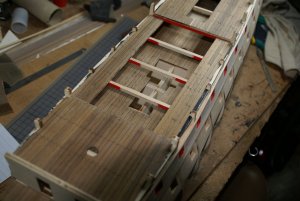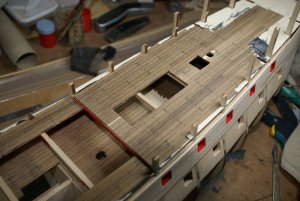It is looking like a ship - definitely - looking forward to see more
Thanks Uwe, I'll do my best although I don't know if that is enough
 |
As a way to introduce our brass coins to the community, we will raffle off a free coin during the month of August. Follow link ABOVE for instructions for entering. |
 |
 |
The beloved Ships in Scale Magazine is back and charting a new course for 2026! Discover new skills, new techniques, and new inspirations in every issue. NOTE THAT OUR FIRST ISSUE WILL BE JAN/FEB 2026 |
 |
It is looking like a ship - definitely - looking forward to see more
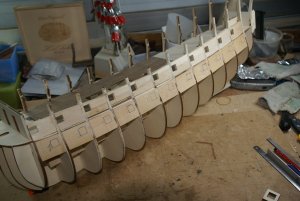
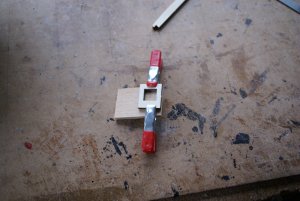
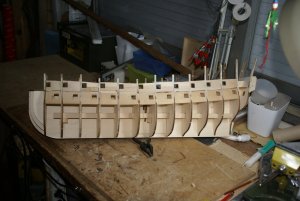


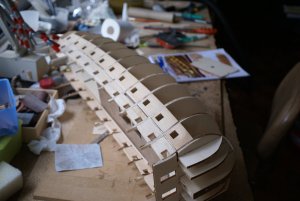
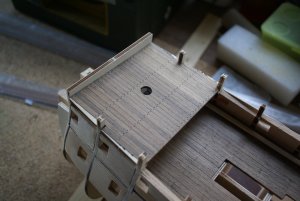
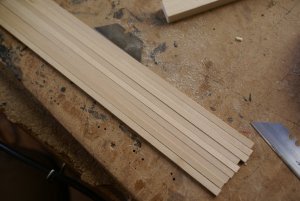
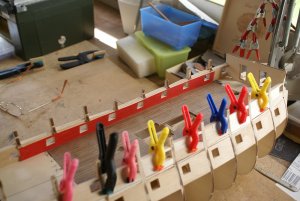
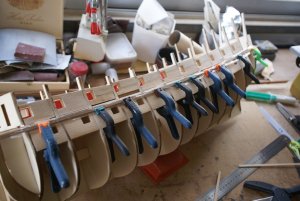
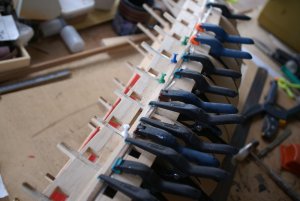
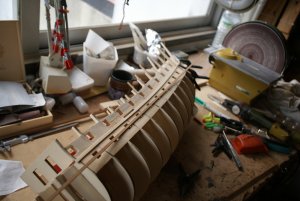

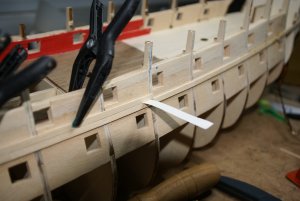
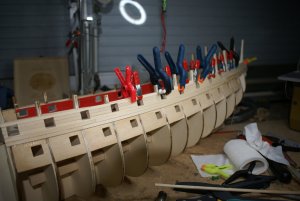
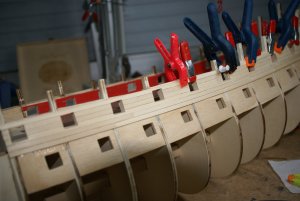
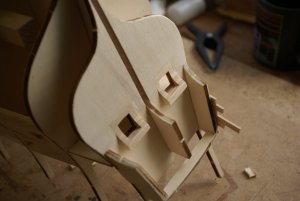
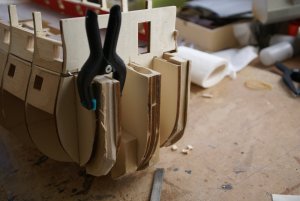
...this is my friend where the very thin line between kit and scratch build. If you are capable follow the build without kit's provided instructions - you are most-likely ready for your scratch build project. keep those pictures coming, please.Nothing of what I have done is contemplated in the instructions, I am not following them anymore, not worth the trouble of reading that junk.
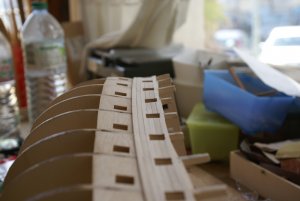
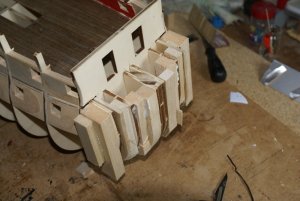
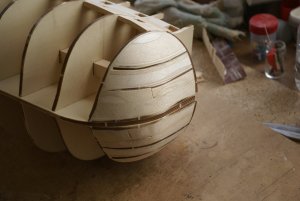
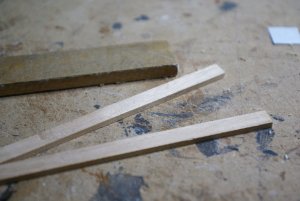
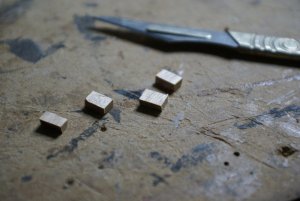
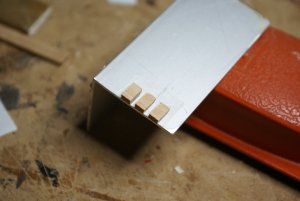
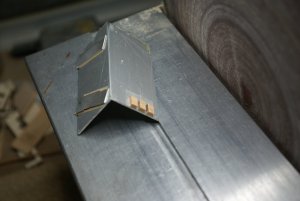
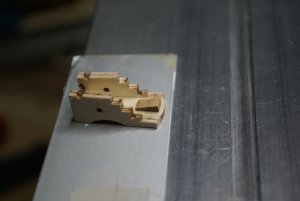
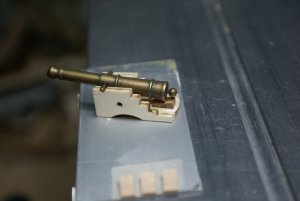
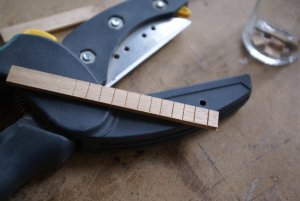
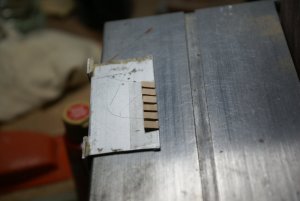
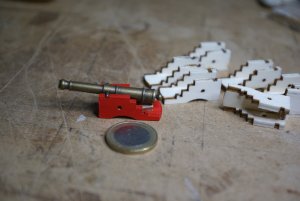
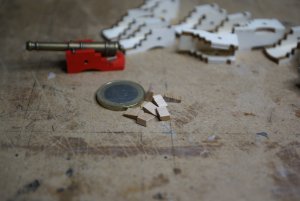
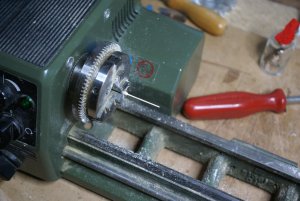
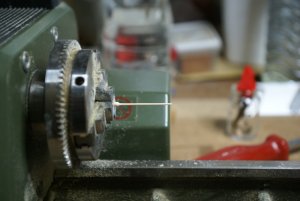
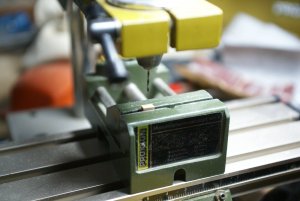
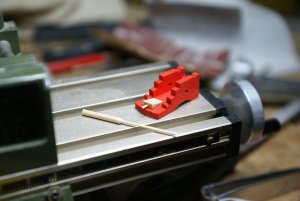
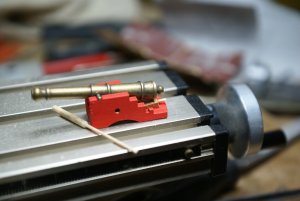
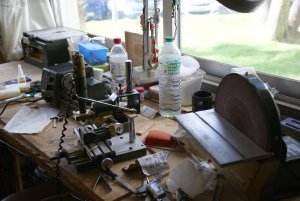
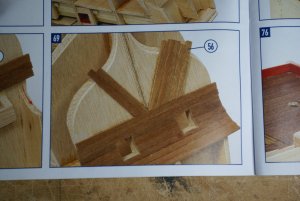

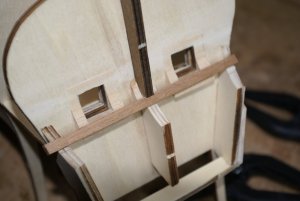
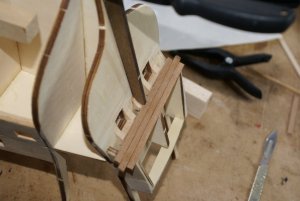
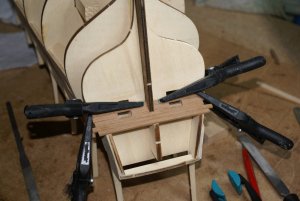
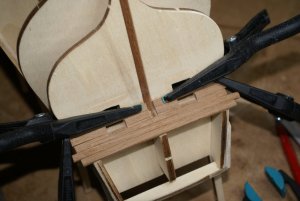
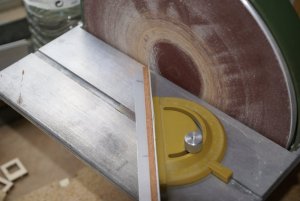
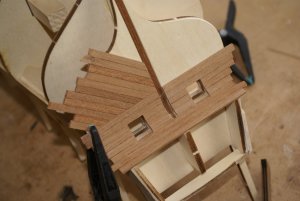
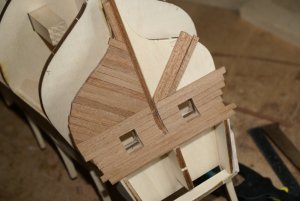
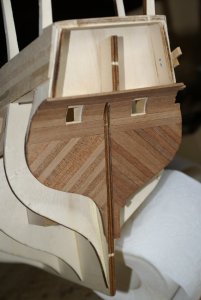
Hi. I have over long life as Model builder - only from Kits - build about 8 from Occte, wher the biggest were Santisima Trinidad and Montanes. I have always bought the hole packet, as you may want to build some parts which is not in the manual at the beginning. El Montanes a part from some small errors and a lousy Keel, which I had to make new One. Generally I have not to many problems with Occre - there are parts you dont use, the metal parts, but all in all taking the price into consiration not so bad. your ship has a price of 450€ compared to the Vanguard qith about 1000 @Once I had a small model boat...
Then I got myself another small model boat and started scratch building yet another small model boat.
My first small model boat was a Viking ship (Amati) that I changed substantially in order to get a passable model of a Viking ship (maybe a build log someday...)
My second and third small boats you already know although Niña is a little put aside at the moment (but not forgotten).
And there happened my 75th birthday...
And then there were FIVE small model boats.
Well, one of then is not so small...
At this point I must confess that it was ME who offered myself one of those small boats. The other was a lawful offer...
Nuestra Senõra del Pilar is kitted by OcCre (spanish) and they sell their more expensive kits complete or in packs. N. S. del Pilar is composed of 6 packs and I offered myself the first two. It is enough to build most of the hull.
The interesting part is that buying the packs is more or less the same price than buying the whole kit and gives more flexibility (and takes a lot less space at the stash.
The first pack is not that exciting, it has a lot of ply for the bulkheads and false keel plus some other wood for planking.
View attachment 68582
The instructions are in color, and there are some 1/3 plans. They cover all the packs and as almost all the instructions that I know are pretty useless. I mean, you have some pictures ot the build and a very vague step-by-step instructions .
In summary: you are on your own .But that happens with most of the kits I know, either ships or planes so nothing new here so nothing new.
View attachment 68583 View attachment 68584
The other thing is that the ship is HUGE. The hull alone is 70cm long and it dwarfs my prince, let alone the Niña.
As a matter of fact I am not sure where I am going to put that monster once finished but I'll think of something. First it needs to be build.
The ply is good quality (5,5mm) but the "bridges" connecting the parts are difficult to break they had to be cut with a heavy carpet knife.
It may seem bold of me being as I am initiating in this hobby, but is not a beginners kit. I may not know a lot about ship kits, but I have my share of kits and instructions and for me a beginners kit is that kit that has very good and detailed instructions, the construction is straightforward, the parts fit together well and there are no traps.
This one has poor instructions, the construction has its problems, the fit is OK but traps it has.
Starting with the ply parts, they are not numbered although there are drawings showing where everything is.
Things like this may happen:
View attachment 68585
Bulkheads 6 and 8 are the more more alike bulkheads of the ship, they could have been placed near any other more different parts, but here they are and at this point you must guess which is which.
Of course this is no problem, once cut and piled with the other bulkheads it is easy to say wich is wich, but this rings a bell and shows that you have no easy way ahead. Or maybe I am being picky.
Once everythig cut, you have an heavy pile of firewood.
View attachment 68586
Well these are decent hours to be in bed, so more tomorrow.
Regards.
JL
I did a complete new Deck (in halves) I admit the promlem with yhe planks - the price difference - and I use Hobbie Guinea as well of supplying wood etc. huge range.Well, time to get back to the monster, sorry, the Nuestra Señora. The spanish and the portuguese had this habit of naming the ships after Nuestra Señora (Our Lady, for those of you that don't understand castilian or spanish).
More the spanish than us they always were more catholic.
Putting together the two halves of the keel revealed how huge the model is, as I said it is 70cm of false keel. The wood is good, the laser cut is well done and the parts have a nice fit.
View attachment 68717
At first I thought that there was some warp on the ply but it disappeared as the two halves were glued together.
View attachment 68718
The halves were glued with the help of a steel ruler to make sure that the bottom of the keel was straight, no signs of the warp, so a very happy modeller.
I used nails while the glue was setting to avoid any deviation. It worked well and this step was completed.
Now for the first deck . (should be the last, if you are going down in the ship, but everybody refers to it as the first deck, so, follow the navy). Four parts, a very small gluing surface, I used PVA at first, it didn't support the weight, so I used CA and it kept untill the deck was planked. The planks, of course gave more strenght to the whole, but even so it broke again. Did not separate due to the planks, but the glue gave way. Some thick cyano solved the problem
View attachment 68719.
I must say that I didn't like the wood OcCre supplied for the deck planking. Too much grain and not good quality wood and also the strips were somewhat twisted. I had bought some wood from Hobbies Guinea, a nice dealer from Spain and I had some strips from mukali and manzonia (I don't know the english names, sorry). As the mukali strips were .6x4mm and the manzonia were .6x5mm, due to the large scale of the ship I decide to use using this one.
I used a metal ruler to make sure that the two halves were absolutely straight while gluing,
View attachment 68720 View attachment 68721
You can see here the bulkheads and the false keel, ready to start doing something interesting like an hull.
View attachment 68722
The fit was excellent, just a touch of sanding paper on the grooves that were a little tight and the bulkeads were absolutely perpendicular to the keeel, no worries here
View attachment 68723
Being so, I dry mounted all the bulkheads, make sure everything was square and straight and a bath of thin CA joined everything together.
View attachment 68724 View attachment 68726
four lenghts of square section were supplied the idea is to help get the hull straight. They also give more strenght to the hull because it is heavy.
The fit was a very little loose, I used some spare square wood to glue those sections to some bulkheads (not all, it was not needed) and I ended up with an absolutely straight keel what I only managed to get in my prince with the help of some wood glued to the sides of the keel.
Even without the square lenghts glued to the bulkheads, the keel was almost straight, just a litthe warp
View attachment 68727
After gluing the squares, the hull was absolutely straight.
View attachment 68729
And it is all for now, time to plank the deck and glue it in place.
See you!
Regards
JL
the problem with the 4 parts of the deck, is why I make copy, and the make new one- now only two halves. I do you plank the Decks outside the ship, following Deck Planking Pattern. Yes too I make mixture of White Glue and a mixed with Black colour. mix into planks and wipe out the surplus, then as you with a very shark knife- it is easy now -as it is outside ship, scrap all the planks first, then smooth it down a little by a very fine sand paper. good resultProceeding with the build of the "monster", some small innacuracies appeared, after all this is only a kit and as such it has to have some flaws. It wouldn't be half the fun if it had not
The alignement of the deck and the mast hole, for instance:
View attachment 69677
Or a small misalignement with the bulkheads
View attachment 69678
Easily corrrected, anyway, some sanding on the front of the decks made the trick, so no real problem here. Not a perfect alignement but also not a disaster, just some care and trial and was corrected.
View attachment 69679View attachment 69680
The two halves of the lower deck aligned almost perfectly and again some filing helped everything to fit properly
View attachment 69681
or almost...
View attachment 69682
more sanding, perfect result.
As I was to use thin cyano I needed a perfect fit between the deck and the top of the bulkheads and the false keel, so I carefully sanded the whole to level everything.
No problem here, after sanding they aligned perfectly. Thin cyano does not fill gaps no matter how small they are.
View attachment 69683
Time to plank the two halves of the deck. The instructions show the whole deck completely planked, but I found that there is a large surface of it that is completely covered by the upper deck so I spared some wood, time and effort and only planked the part that remains at sight.
View attachment 69684View attachment 69685
As I already said, I didn't like the supplied wood, so I used some wood (manzonia) I bought and I used it to plank the deck. It is a somewhat dark wood, but I have seen contemporary replicas that have dark decks and not the usual yellowish decks mostly seen.
I used the four butt shift pattern only because it was a large ship and I liked it so...
View attachment 69686View attachment 69687
I represented the treenailing with a small hand drill of .6 mm. It gave a subtle effect that pleased me. Then came the dirty part of it, the black ink and PVA mix part.
The whole planking was spreaded with the mix (this time I used a more greyish mix, less visible than the black that I used on the Prince, so more subtle).
View attachment 69688View attachment 69689
And this time I also changed the procedure and instead of sanding the planking I scraped it with the blade of a heavy duty knife. It worked much better, was quicker and it saved me a lot od sandpaper and as I sharpened the blade a lot of times one blade did the whole job. Cheaper.
View attachment 69690
It gave me the effect of a somewhat worn deck and I liked the look of it. With some more scraping it became even better and being the lower deck you wont see much of it, but anyway I was pleased with the result.
Time to glue the two halves on its place, and as the fitting was very good I could use the thin cyano applied with the plastic pippets that I began to use for that effect. Works wonders.
View attachment 69691
In this picture it seems that the the halves does not fit perfectly, but they do. When the picture was taken one half was glued and the other just in place. After gluing they were aligned perfectly .
In spite of all my efforts, a small gap remained between the two halves. In despair I discovered a way to make the uggly gap disappear. In the next photo the left part of the gap was already treated and the gap was invisible, the right part is the gap in all its ugglyness...
View attachment 69692
I found that filling the gap with PVA and then scrapping the wood in order to get some wood dust on it made it completely disappear.
With the experience comes a lot of very useful small tricks thay make life happyer and easier.
View attachment 69693View attachment 69694View attachment 69695
So here is where I am now. Next steps to follow.
View attachment 69696
Regards
L
Hallo Poul Erik,Hi. I have over long life as Model builder - only from Kits - build about 8 from Occte, wher the biggest were Santisima Trinidad and Montanes. I have always bought the hole packet, as you may want to build some parts which is not in the manual at the beginning. El Montanes a part from some small errors and a lousy Keel, which I had to make new One. Generally I have not to many problems with Occre - there are parts you dont use, the metal parts, but all in all taking the price into consiration not so bad. your ship has a price of 450€ compared to the Vanguard qith about 1000 @
Hi. I have over long life as Model builder - only from Kits - build about 8 from Occte, wher the biggest were Santisima Trinidad and Montanes. I have always bought the hole packet, as you may want to build some parts which is not in the manual at the beginning. El Montanes a part from some small errors and a lousy Keel, which I had to make new One. Generally I have not to many problems with Occre - there are parts you dont use, the metal parts, but all in all taking the price into consiration not so bad. your ship has a price of 450€ compared to the Vanguard qith about 1000 @
